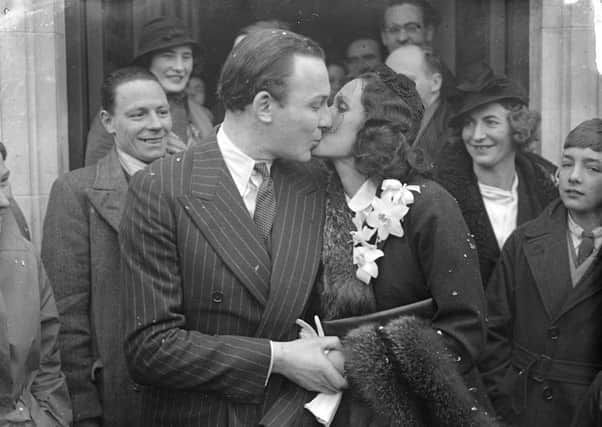Online records show actor ‘remarried one hour after divorce’


Bruce Seton was a familiar face in the films of the 1940s and 1950s, starring in the likes of Whisky Galore!, The Cruel Sea and Fabian of the Yard.
Now it appears the character actor from Edinburgh, who died in 1969, could hold the record for the shortest time between divorce and remarriage in Scotland.
Advertisement
Hide AdAdvertisement
Hide AdRecords of births, marriages and deaths, published online for the first time today, have uncovered the extraordinary love story of the dashing actor – and soldier – 1940 who married for a second time just an hour after being divorced in a Scottish court on St Valentine’s Day.
Seton married his second wife, actress Antoinette Cellier, in a special ceremony in Edinburgh – having only an hour before been granted a divorce in the Court of Session from his first wife, Tamara Desni, an actress of Russian descent. According to the National Records of Scotland, this may be the shortest time ever between a divorce and remarriage in Scotland.
A graduate of Edinburgh Academy, Seton had been an officer in the Black Watch until leaving the army in 1932 to take up acting. He joined up again in 1939, serving as a captain with the 10th Battalion of the Cameronians (Scottish Rifles).
Seton’s marriage was one of 53,522 in Scotland in 1940, the records of which are all being made available online through the official website ScotlandsPeople.
That year saw the introduction of civil marriages performed by registrars in Scottish register offices from 1 July onwards and put an end to the old Scottish form of irregular marriage by declaration in the presence of witnesses – popularly known as “Gretna Green marriages”.
A separate Marriage Act 1939 was also introduced to make easier those marriages in which one of the parties lived in Scotland and the other in England, by simplifying the public notice that had to be given of the marriage.
Although only 4 per cent of marriages from that date were performed by registrars, in 1941 more than 11 per cent of marriages were civil. This was the start of the trend that in 2014 saw 52 per cent of all Scottish marriages being conducted as civil marriages.
Tim Ellis, Registrar General and Keeper of the Records of Scotland, said: “I am pleased that we’ve been able to add a further almost quarter of a million records of births, deaths and marriages to the already substantial information available on ScotlandsPeople.
Advertisement
Hide AdAdvertisement
Hide Ad“This release, which includes civil marriages from 1940, the first time they were performed by registrars in Scottish registration offices, is an interesting reflection of a changing Scottish society at that time – and an opportune moment, too, to celebrate the important work of registrars across Scotland over many decades.”